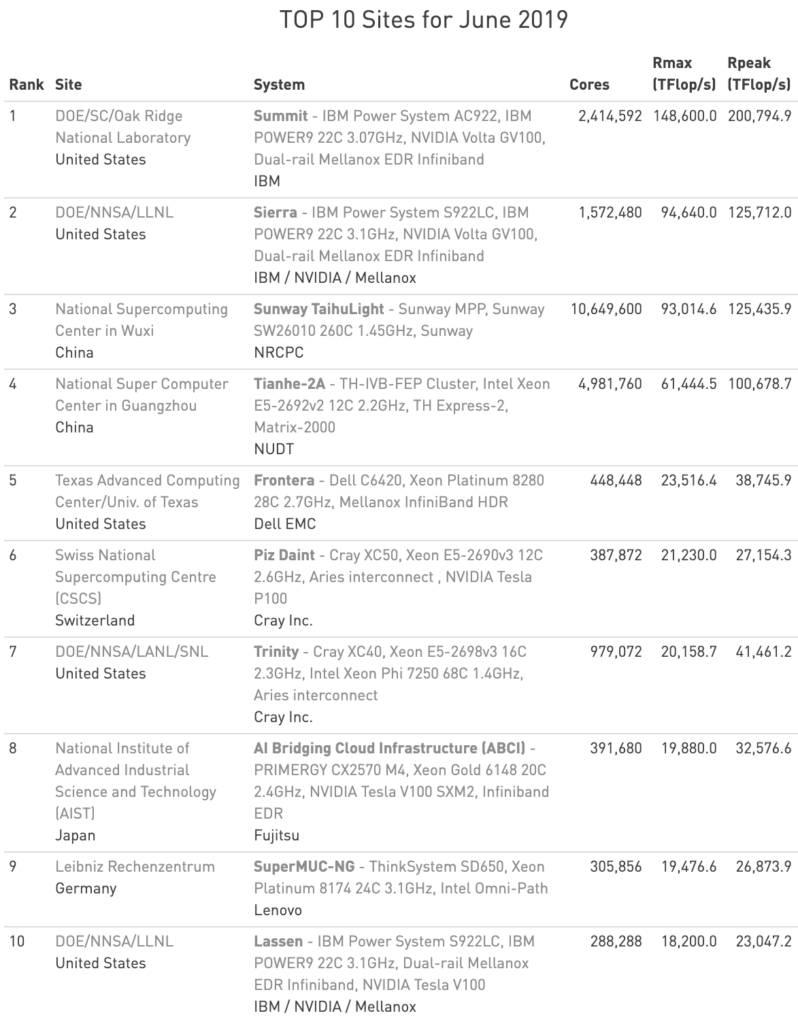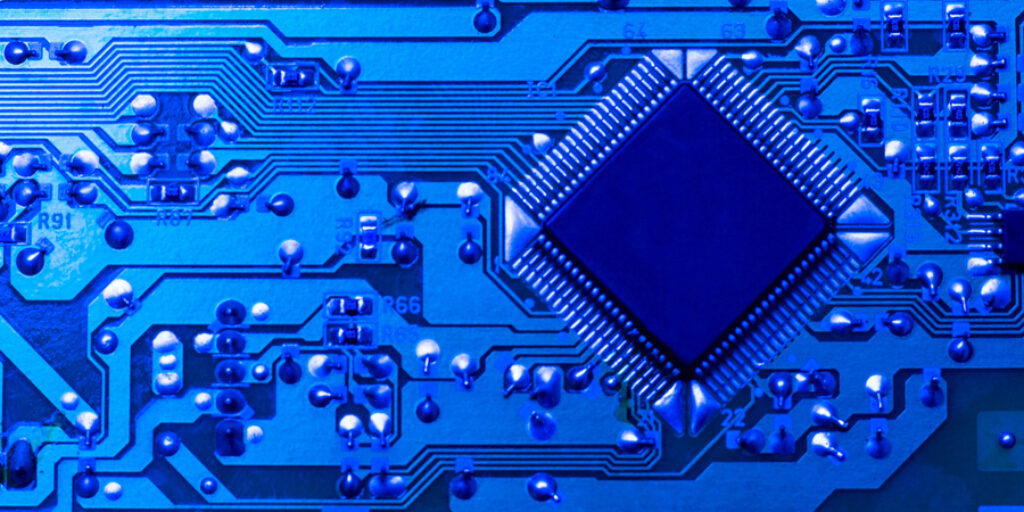 The latest TOP500 list of the world’s fastest supercomputers is out today, marking a major milestone in the 26-year history of the list. For the first time, all 500 systems deliver a petaflop or more on the Linpack benchmark, with the entry level to the list now at 1.022 petaflops.
The latest TOP500 list of the world’s fastest supercomputers is out today, marking a major milestone in the 26-year history of the list. For the first time, all 500 systems deliver a petaflop or more on the Linpack benchmark, with the entry level to the list now at 1.022 petaflops.
Largely unchanged, there are only two new entries in the top 10, one of which was an existing system that was upgraded with additional capacity. Of note is Frontera at TACC, the only new supercomputer in the top 10, which attained its number five ranking by delivering 23.5 petaflops on HPL. The Dell C6420 system, powered by Intel Xeon Platinum 8280 processors.
 Highlights of the Top 10 Machines:
Highlights of the Top 10 Machines:
- Two IBM-built supercomputers, Summit and Sierra, installed at the Department of Energy’s Oak Ridge National Laboratory (ORNL) in Tennessee and Lawrence Livermore National Laboratory in California, respectively, retain the first two positions on the list. Both derive their computational power from Power 9 CPUs and NVIDIA V100 GPUs. The Summit system slightly improved its HPL result from six months ago, delivering a record 148.6 petaflops, while the number two Sierra system remains unchanged at 94.6 petaflops.
- The Sunway TaihuLight, a system developed by China’s National Research Center of Parallel Computer Engineering & Technology (NRCPC) and installed at the National Supercomputing Center in Wuxi, holds the number three position with 93.0 petaflops. It’s powered by more than 10 million SW26010 processor cores.
- At number four is the Tianhe-2A (Milky Way-2A) supercomputer, developed by China’s National University of Defense Technology (NUDT) and deployed at the National Supercomputer Center in Guangzhou. It used a combination of Intel Xeon and Matrix-2000 processors to achieve an HPL result of 61.4 petaflops.
- At number six is Piz Daint, a Cray XC50 system installed at the Swiss National Supercomputing Centre (CSCS) in Lugano, Switzerland. It’s equipped with Intel Xeon CPUs and NVIDIA P100 GPUs. Piz Daint remains the most powerful system in Europe.
- Trinity, a Cray XC40 system operated by Los Alamos National Laboratory and Sandia National Laboratories improves its performance to 20.2 petaflops, which earns it the number seven position. It’s powered by Intel Xeon and Xeon Phi processors.
- The AI Bridging Cloud Infrastructure (ABCI) machine is installed in Japan at the National Institute of Advanced Industrial Science and Technology (AIST) and is listed at number eight, delivering 16.9 petaflops. The Fujitsu-built system is equipped with Intel Xeon Gold processors and NVIDIA Tesla V100 GPUs.
- SuperMUC-NG is in the number nine position with 19.5 petaflops. It’s installed at the Leibniz-Rechenzentrum (Leibniz Supercomputing Centre) in Garching, near Munich. The Lenovo-built machine is equipped with Intel Platinum Xeon processors, as well as the company’s Omni-Path interconnect.
- The upgraded Lassen supercomputer captures the number 10 spot, with an upgrade that boosted its original 15.4 petaflops result on HPL to 18.2 petaflops. Installed at Lawrence Livermore National Laboratory, Lassen is the unclassified counterpart to the classified Sierra system and shares the same IBM Power9/NVIDIA V100 GPU architecture.



